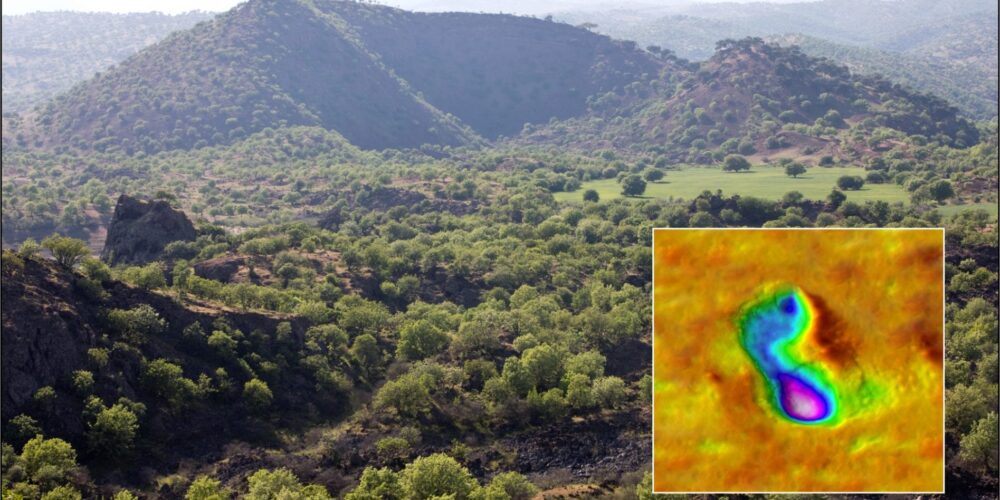Volcanic eruption witnessed by Homo sapiens from pre-historic times

A volcanic eruption believed to be eye-witnessed by humans in pre-historic times happened 245,000 years later than originally expected, according to new research involving Curtin University researchers.
The research, published in Quaternary Science Reviews, aimed to determine the age of pre-historic footprints found in the ash layer produced by the Çakallar volcano eruption, which took place in the town of Kula in western Turkey thousands of years ago.
Along with the footprints, a rock painting was discovered in close proximity to the eruption site in the Kula UNESCO Geopark, in Manisa Province, Turkey. The painting, which illustrates the eruption of the volcano, highlights how humans from thousands of years ago were able to illustrate natural phenomena in their own way.
Lead Australian author Dr Martin Danišík, from the John de Laeter Centre based at Curtin University, said previous studies suggested the footprints belonged to Homo neanderthalensis from the Pleistocene age, but the new findings indicated they may be younger than previously thought.
“The footprints, widely known as “Kula footprints”, were discovered in the 1960s when construction workers, who were moving volcanic rock away from one of the volcanoes in the area, found them well-preserved in fine-grained volcanic ash,” Dr Danišík said.
“Our team was able to determine the age of the volcanic ash that preserved the footprints by using two different techniques. A radiogenic helium dating method was used to measure the eruption age of tiny zircon crystals, and the cosmogenic chlorine exposure dating method was used to measure the time that the volcanic rocks have been residing near the Earth’s surface.
“The two independent dating approaches showed internally consistent results and collectively suggest that the volcanic eruption was witnessed by Homo sapiens during the pre-historic Bronze Age, 4,700 years ago and 245,000 years later than originally reported.”
The research also suggests that after the initial eruption, humans and their canine companions slowly approached the volcano, leaving distinctive footprints in the wet ash blanket on the surface. Volcanic activity continued, causing dark-coloured volcanic rock to bury the ash and therefore preserve the footprints.
Dr Danišík explained that the humans witnessed the final stages of the volcanic eruption from a safe distance, making it highly likely the Homo sapiens were also responsible for the rock paintings discovered close to the site.
“The rock painting is a fascinating connection to the footprints, as it showcases how humans from 4,700 years ago were able to paint natural processes, such as a volcanic eruption, in their own artistic way with limited tools and materials,” Dr Danišík said.
The research was led by researchers from Hacettepe University in Turkey, and co-authored by researchers from Curtin University, Istanbul Technical University and Celal Bayar University in Turkey, and Heidelberg University in Germany.
The research paper titled, ‘Volcanic eruption eye-witnessed and recorded by prehistoric humans,’ can be found online here.
Further information on the Kula UNESCO Geopark can be found online here.



